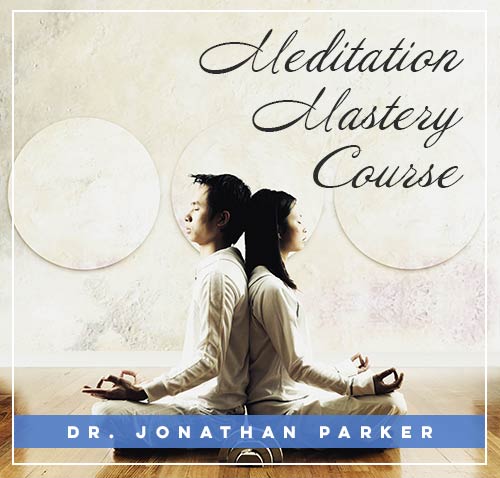Exploring Different Meditation Techniques: From Zen to Guided

Hey there, amazing readers! 🖐️ Just a quick note: yes, we know there are a lot of ads here. Trust us, we get it—it’s not the prettiest look, but they help us keep this blog alive and kicking. Those pesky little ads cover the costs of all the behind-the-scenes magic, from hosting and tech stuff to creating content we hope you’ll love.
We’re committed to delivering quality posts, and your support (even just sticking around despite the ads) means everything to us. So, bear with us, and thanks for helping us keep the good vibes rolling. Now, on to the fun stuff! 😉
TRANSLATE BUTTON AT THE END OF THE ARTICLE
Meditation has captivated the minds of individuals for centuries, offering a pathway to inner peace, self-discovery, and improved mental well-being.
While the practice itself is simple, the vast array of meditation techniques can be overwhelming, especially for beginners.
This article aims to guide you through this diverse landscape, exploring different approaches, from the ancient Zen tradition to modern guided meditations.
1.
Zen Meditation: Unveiling the Simplicity of Zazen
Zen meditation, also known as Zazen, originates from Zen Buddhism.
This practice emphasizes the importance of simplicity, awareness, and non-judgmental observation.
It’s characterized by sitting upright in a comfortable posture, focusing on the breath, and observing the mind’s natural activity without getting caught up in thoughts or emotions.
Key Aspects of Zen Meditation:
Posture: The traditional posture for Zazen involves sitting on a zafu cushion with legs crossed in the lotus or half-lotus position.
However, any comfortable seated position with a straight spine is acceptable.
Breath Awareness: Paying attention to the natural rhythm of the breath is a primary focus in Zazen.
This helps to anchor the mind and cultivate present-moment awareness.
Non-Judgmental Observation: When thoughts arise, they are acknowledged without judgment or attachment.
Instead, the meditator allows them to pass by like clouds in the sky, returning to the focus on the breath.
Benefits of Zen Meditation:
Reduced stress and anxiety
Improved focus and concentration
Increased self-awareness
Enhanced emotional regulation
Greater sense of inner peace and well-being
2.
Vipassana Meditation: Cultivating Insight Through Mindfulness
Vipassana meditation, a Buddhist technique, involves observing the sensations arising in the body and mind with a detached and non-reactive attitude. This practice helps cultivate insight into the impermanent nature of reality and promotes inner equanimity.
Key Aspects of Vipassana Meditation:
Body Scan: The meditator systematically directs their attention to different parts of the body, noting the sensations arising and passing away.
Non-Reactivity: Observing sensations without judgment, attachment, or aversion is crucial.
Equanimity: Cultivating a balanced and accepting attitude towards all experiences.
Benefits of Vipassana Meditation:
Deepened self-awareness
Increased mindfulness and focus
Reduced reactivity to negative emotions
Greater appreciation for the present moment
Enhanced understanding of impermanence
3.
Mindfulness Meditation: Anchoring in the Present Moment
Mindfulness meditation, rooted in Buddhist teachings, involves paying attention to the present moment without judgment. This practice can be practiced in various ways, including focusing on the breath, bodily sensations, sounds, thoughts, or emotions.
Key aspects of Mindfulness Meditation:
Present-moment awareness: Bringing the focus to the current moment, regardless of what is happening.
Non-judgmental observation: Observing thoughts, feelings, and sensations without judgment.
Acceptance: Accepting the present moment as it is, without resistance.
Benefits of Mindfulness Meditation:
Reduced stress and anxiety
Improved emotional regulation
Increased self-awareness and compassion
Enhanced focus and concentration
Greater resilience in the face of challenges
4.
Mantra Meditation: Harnessing the Power of Sound
Mantra meditation involves the repetition of a sound, word, or phrase to quiet the mind and focus attention.
This practice can be traced back to ancient Hindu and Buddhist traditions.
Key Aspects of Mantra Meditation:
Choosing a mantra: There are many mantras available, each with its own meaning and purpose.
Some common mantras include “Om” and “So Hum.”
Repetition: The mantra is repeated silently or chanted aloud, focusing on the sound and its vibration.
Focus: The mind is focused on the mantra, letting go of other thoughts and distractions.
Benefits of Mantra Meditation:
Reduced stress and anxiety
Improved focus and concentration
Enhanced emotional well-being
Increased sense of inner peace and harmony
Spiritual awakening and self-realization
5.
Guided Meditation: Embarking on a Structured Journey
Guided meditation offers a structured approach to meditation, making it ideal for beginners and those seeking specific guidance.
A qualified teacher or audio recording leads the meditator through the practice, using various techniques to promote relaxation, focus, and self-awareness.
Benefits of Guided Meditation:
Accessibility: Provides a clear and structured approach for beginners.
Variety: Offers a wide range of themes and techniques to address specific goals.
Ease of Use: Eliminates the need for self-direction, allowing the mind to relax and absorb the instructions.
Enhanced Focus: Guided imagery and instructions can help maintain focus and overcome distractions.
Personalized Experience: Some guided meditations cater to specific needs and goals, such as sleep, anxiety relief, or improved focus.
Whether you’re drawn to the ancient wisdom of Zen, the mindful approach of Vipassana, the simplicity of mantra chanting, or the structure of guided meditation, there’s a practice waiting to unlock the potential for inner peace and well-being within you.
Embark on this journey of self-discovery, and allow meditation to guide you towards a calmer, clearer, and more fulfilling life.

The Enlightenment Journey is a remarkable collection of writings authored by a distinguished group of experts in the fields of spirituality, new age, and esoteric knowledge.
This anthology features a diverse assembly of well-experienced authors who bring their profound insights and credible perspectives to the forefront.
Each contributor possesses a wealth of knowledge and wisdom, making them authorities in their respective domains.
Together, they offer readers a transformative journey into the realms of spiritual growth, self-discovery, and esoteric enlightenment.
The Enlightenment Journey is a testament to the collective expertise of these luminaries, providing readers with a rich tapestry of ideas and information to illuminate their spiritual path.
Our Diverse Expertise 🌟
While our primary focus is on spirituality and esotericism, we are equally passionate about exploring a wide range of other topics and niches 🌍📚. Our experienced team is dedicated to delivering high-quality, informative content across various subjects ✨.
To ensure we provide the most accurate and valuable insights, we collaborate with trusted experts in their respective domains 🧑🏫👩🏫. This allows us to offer well-rounded perspectives and knowledge to our readers.
Our blog originally focused on spirituality and metaphysics, but we’ve since expanded to cover a wide range of niches. Don’t worry—we continue to publish a lot of articles on spirituality! Frequently visit our blog to explore our diverse content and stay tuned for more insightful reads.






